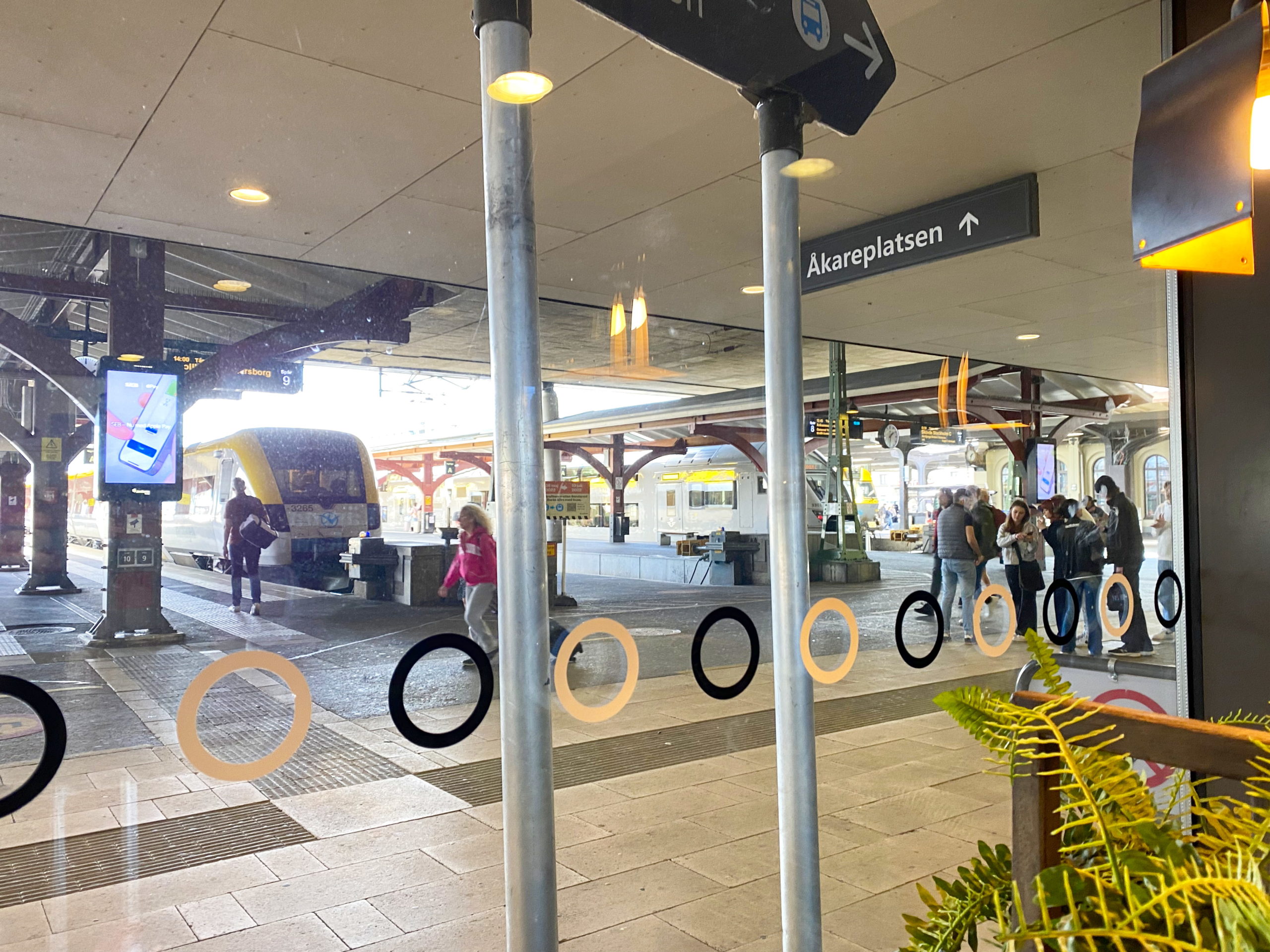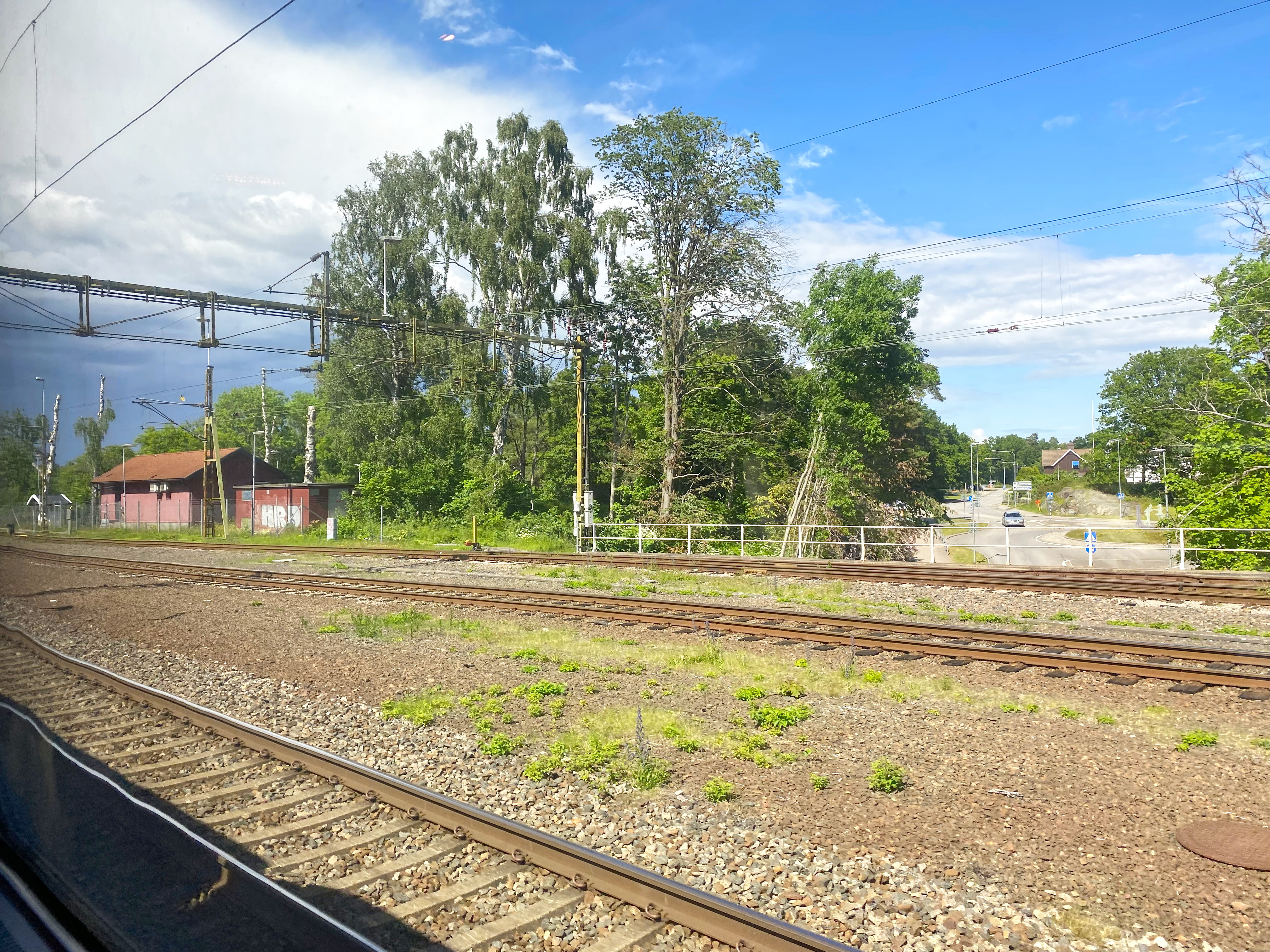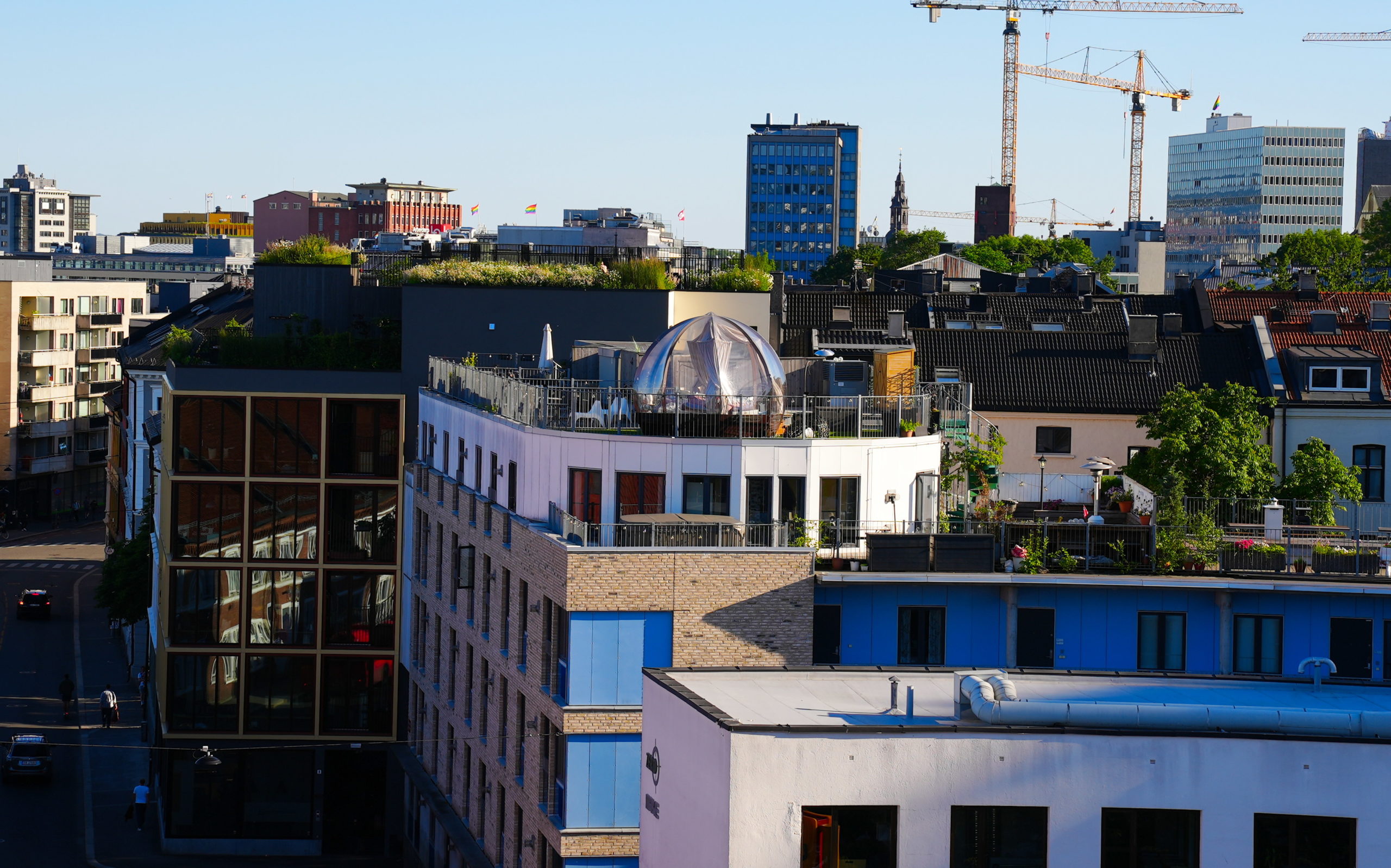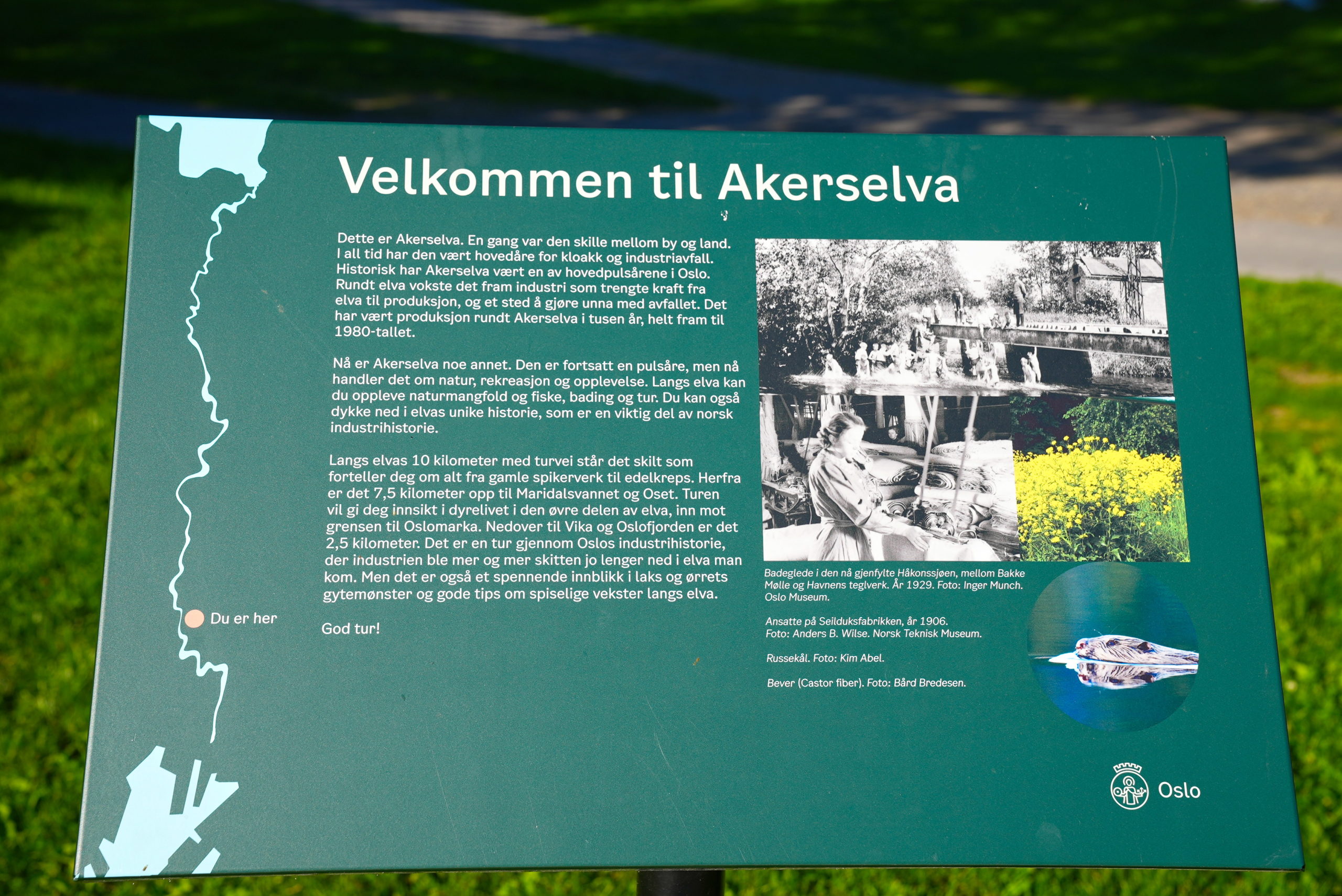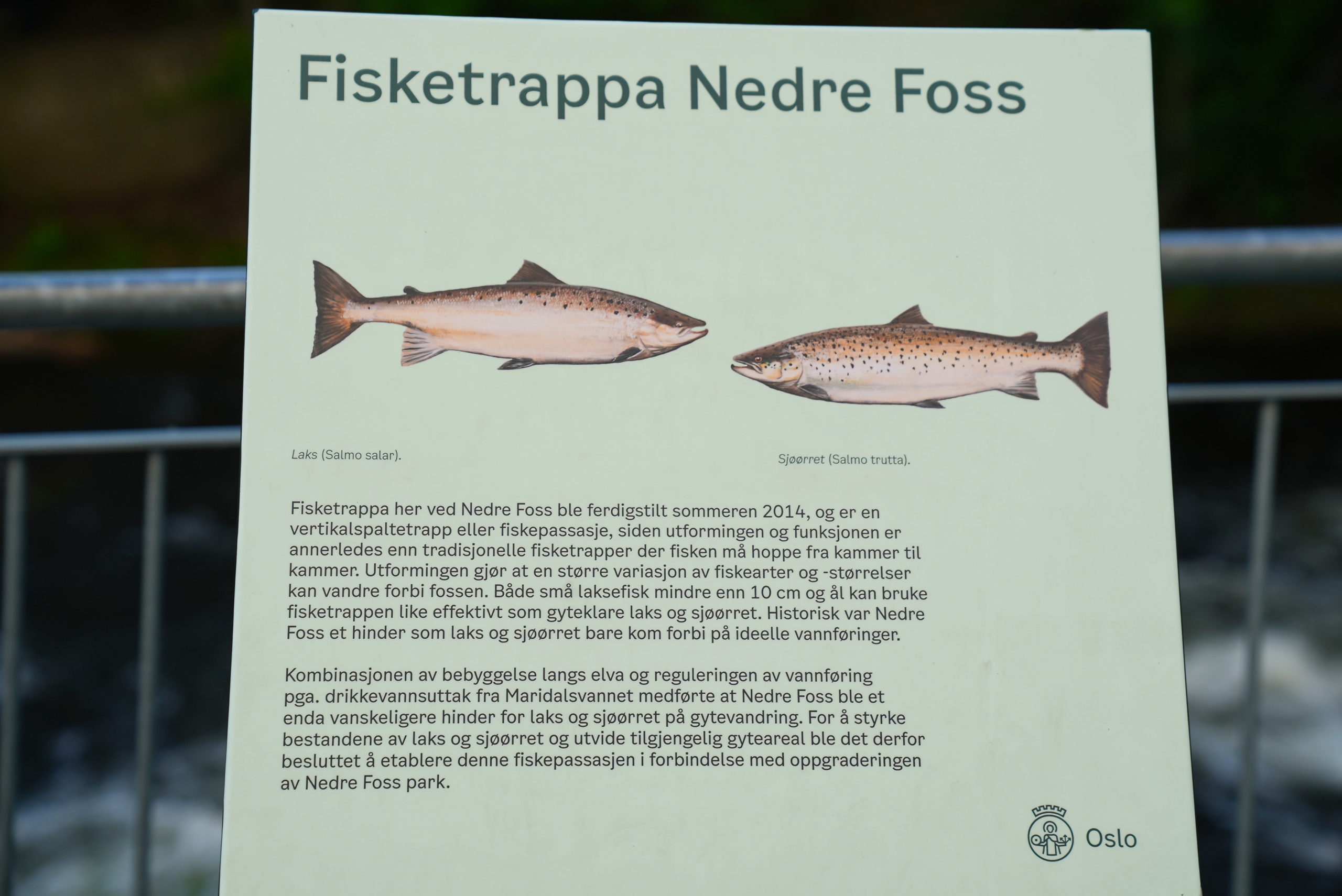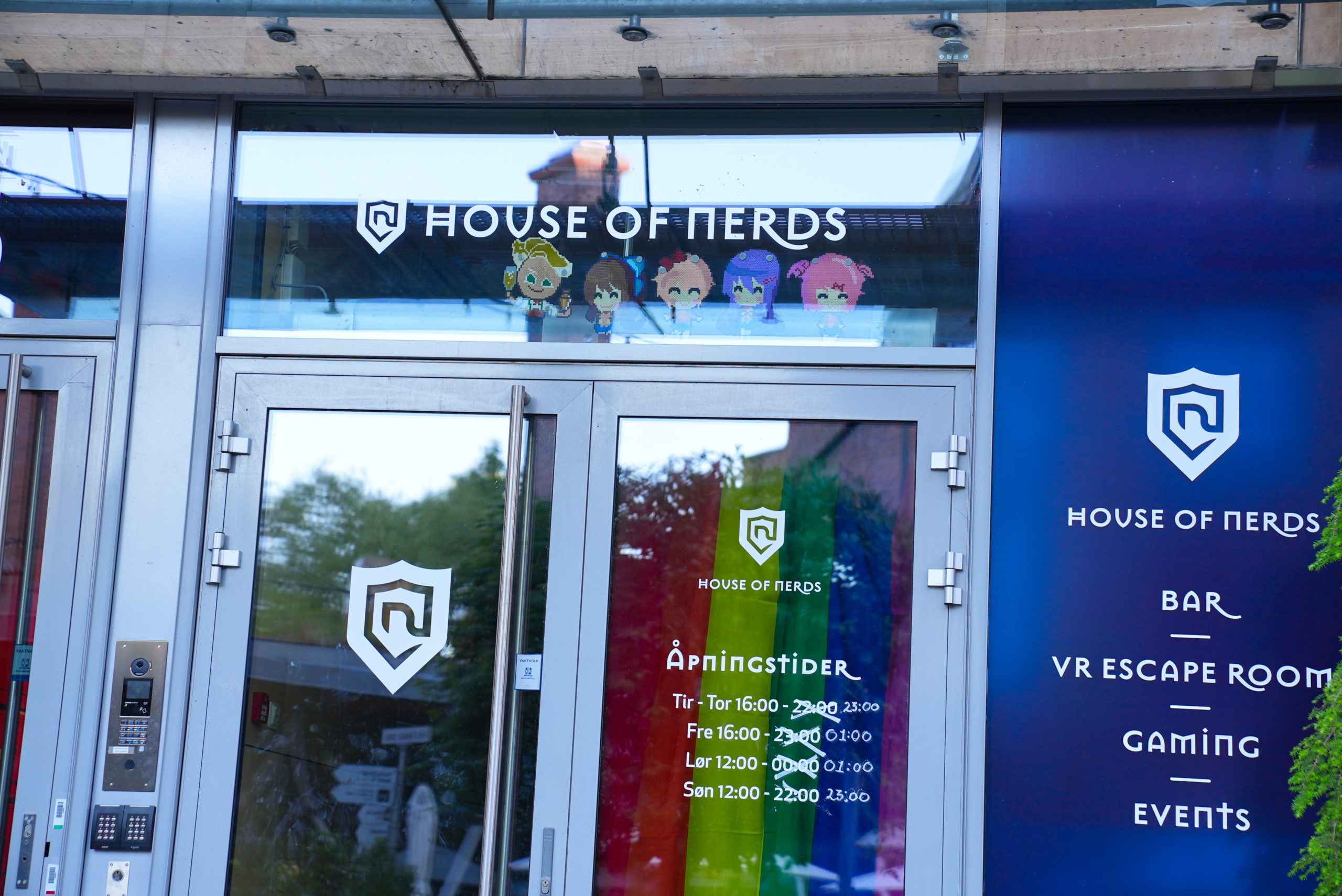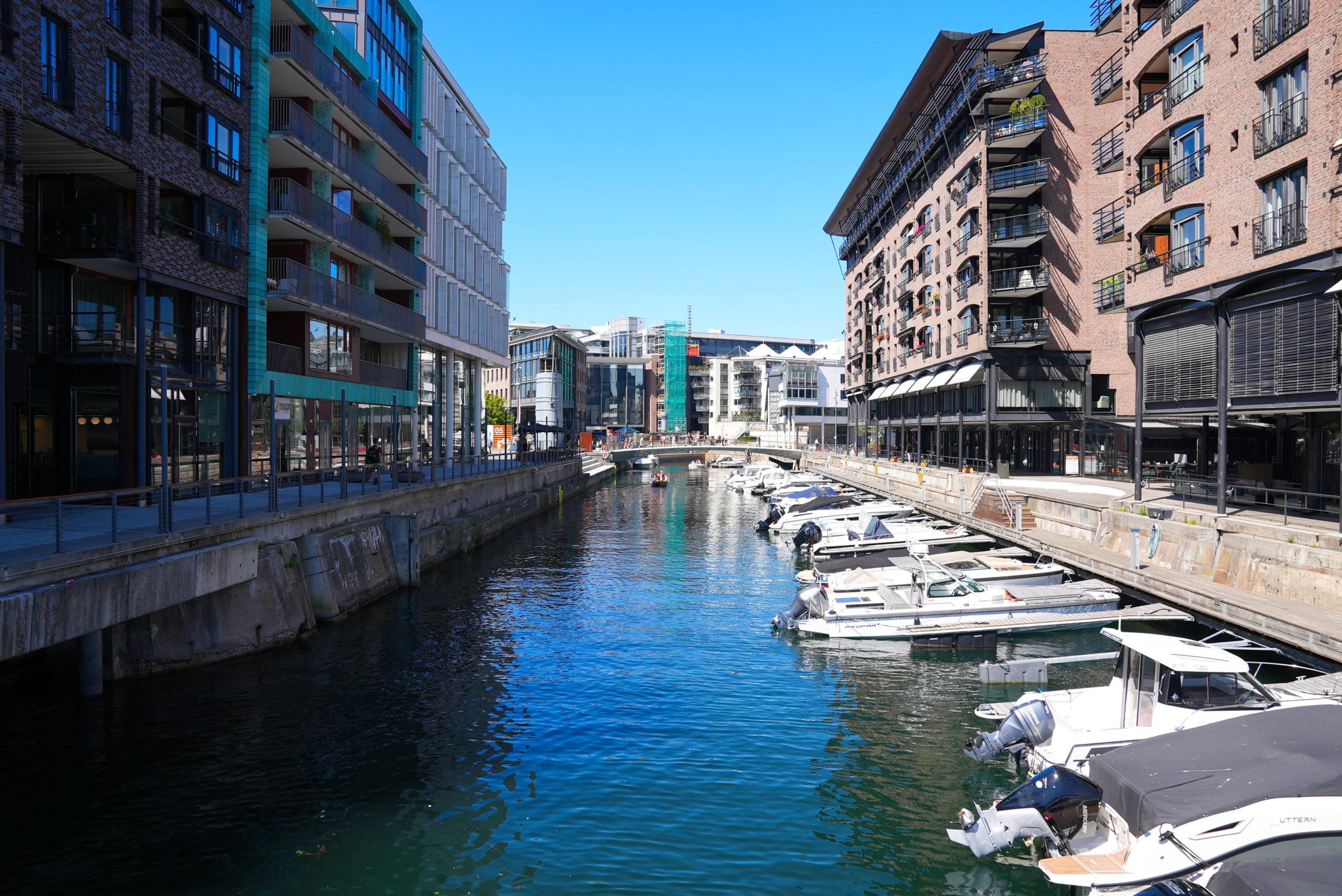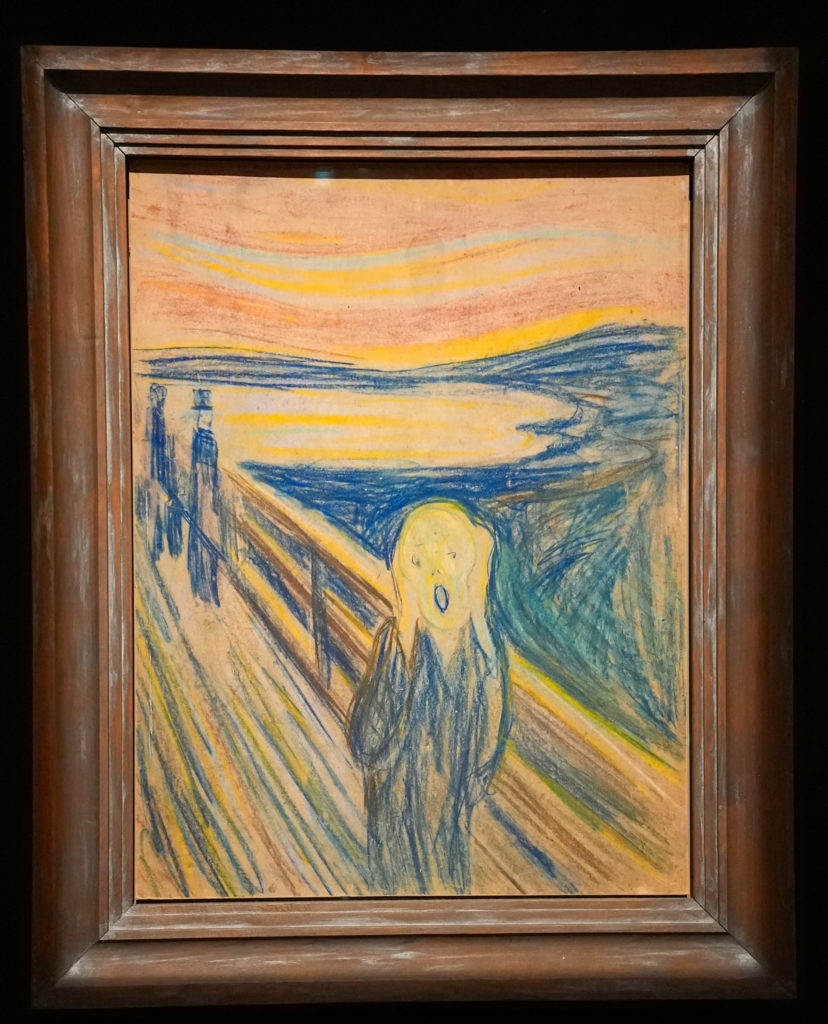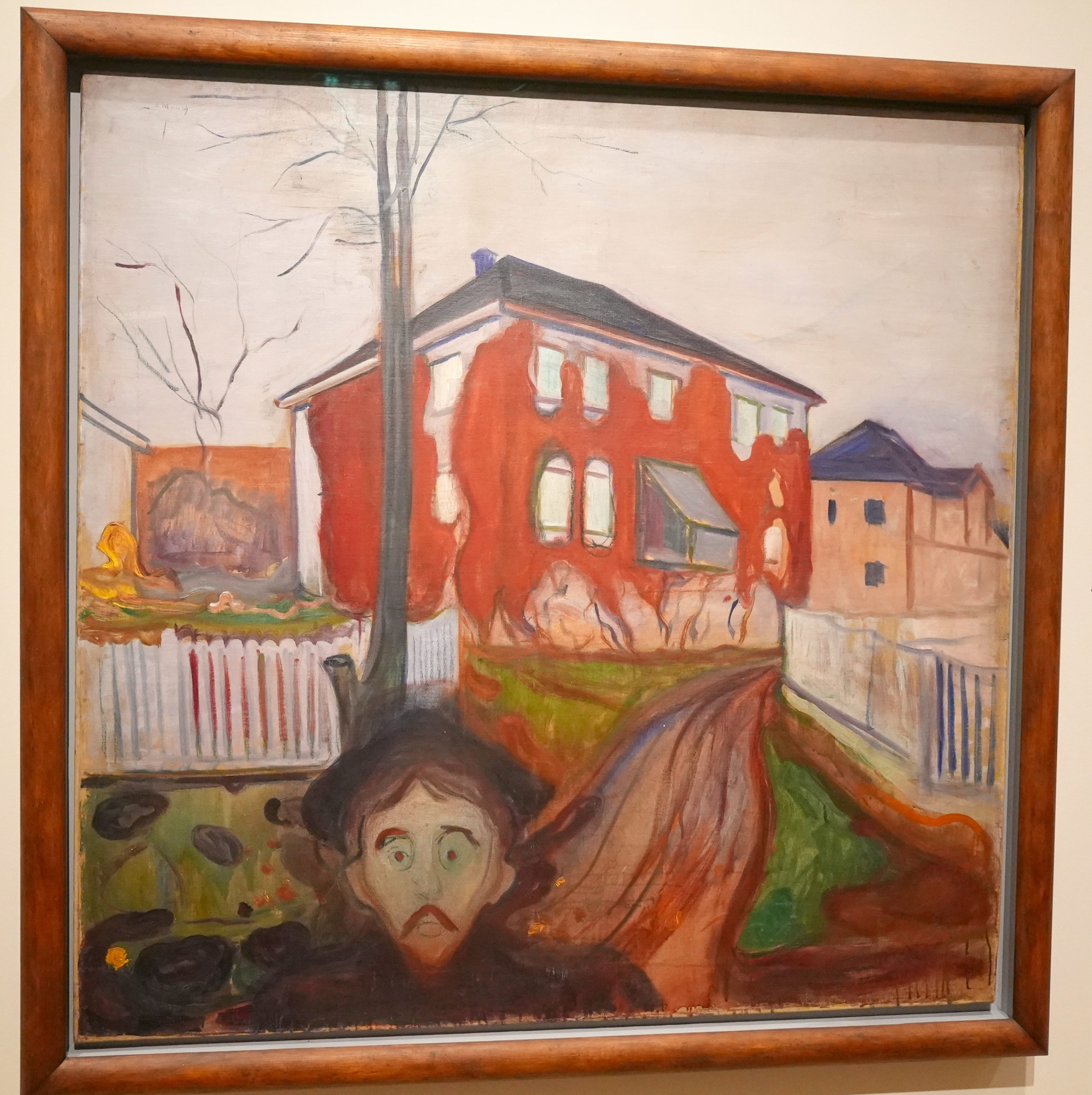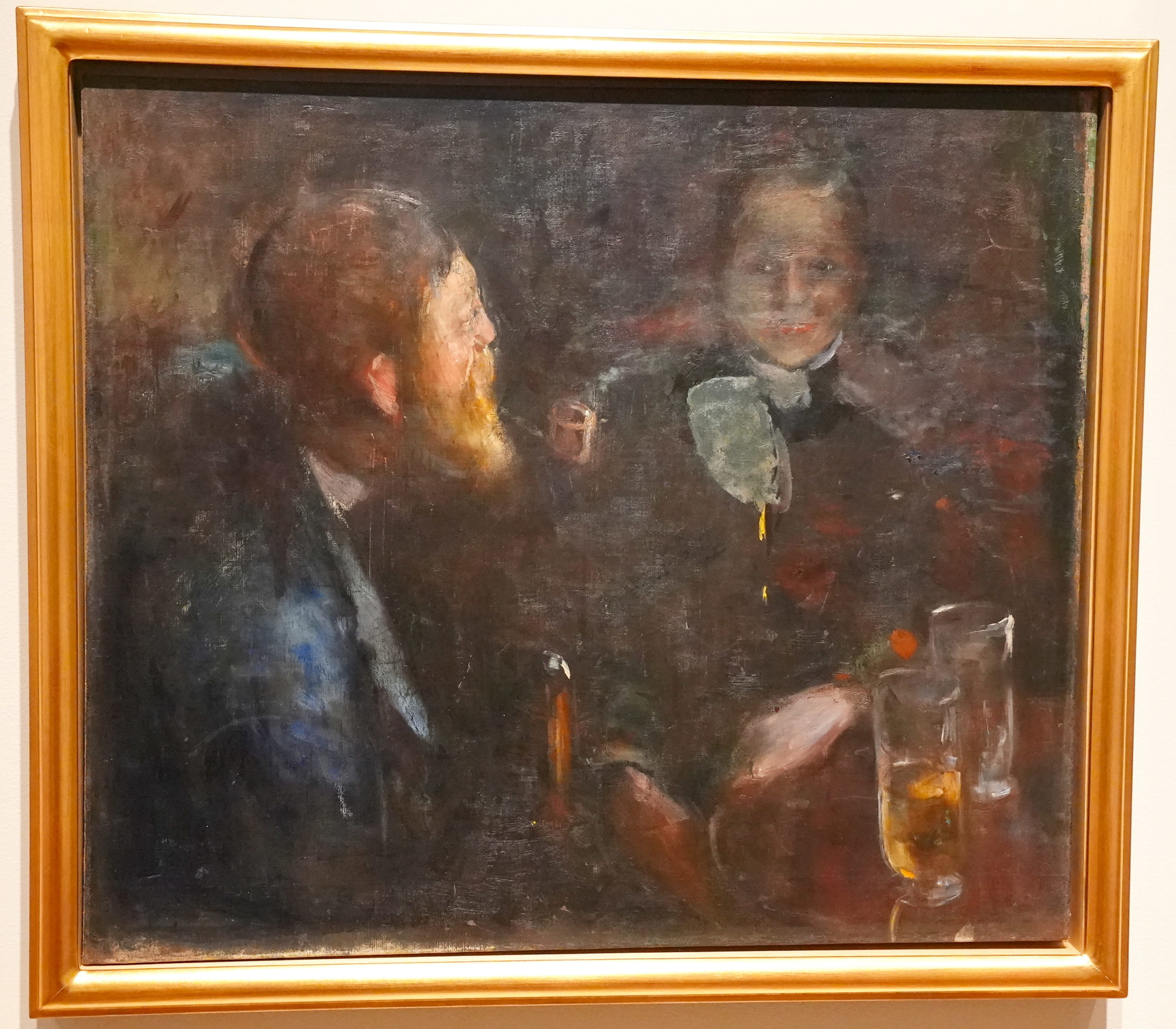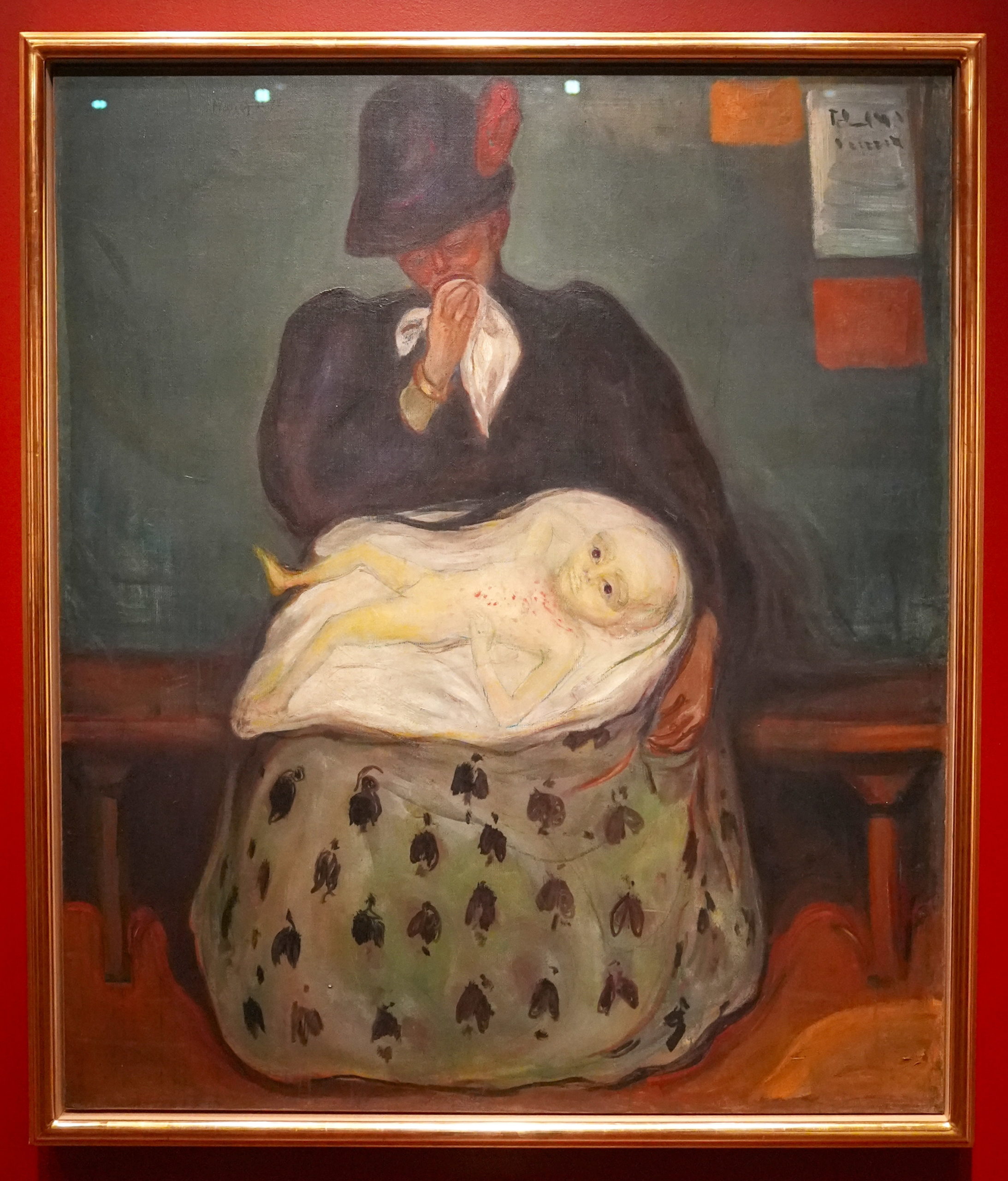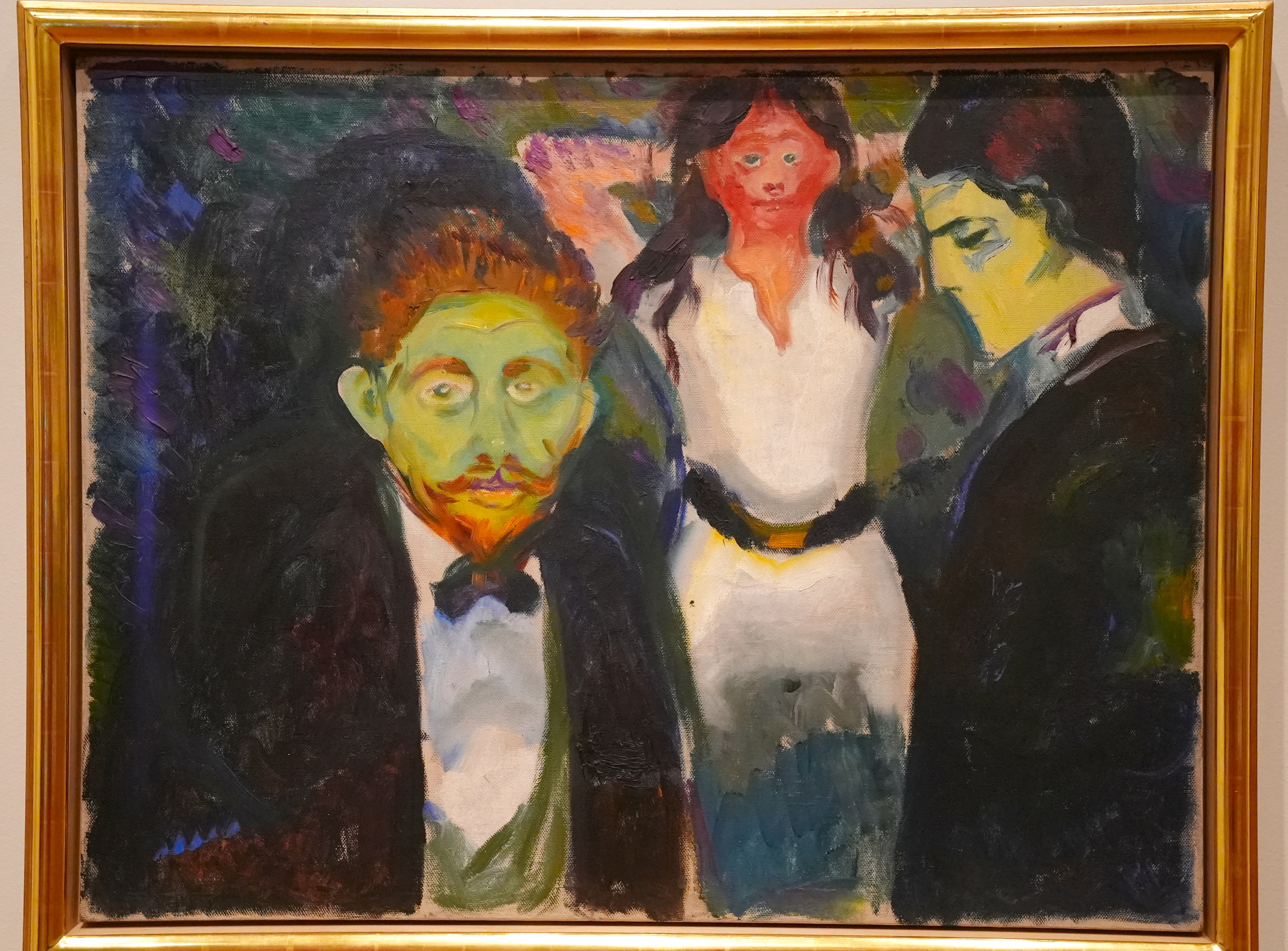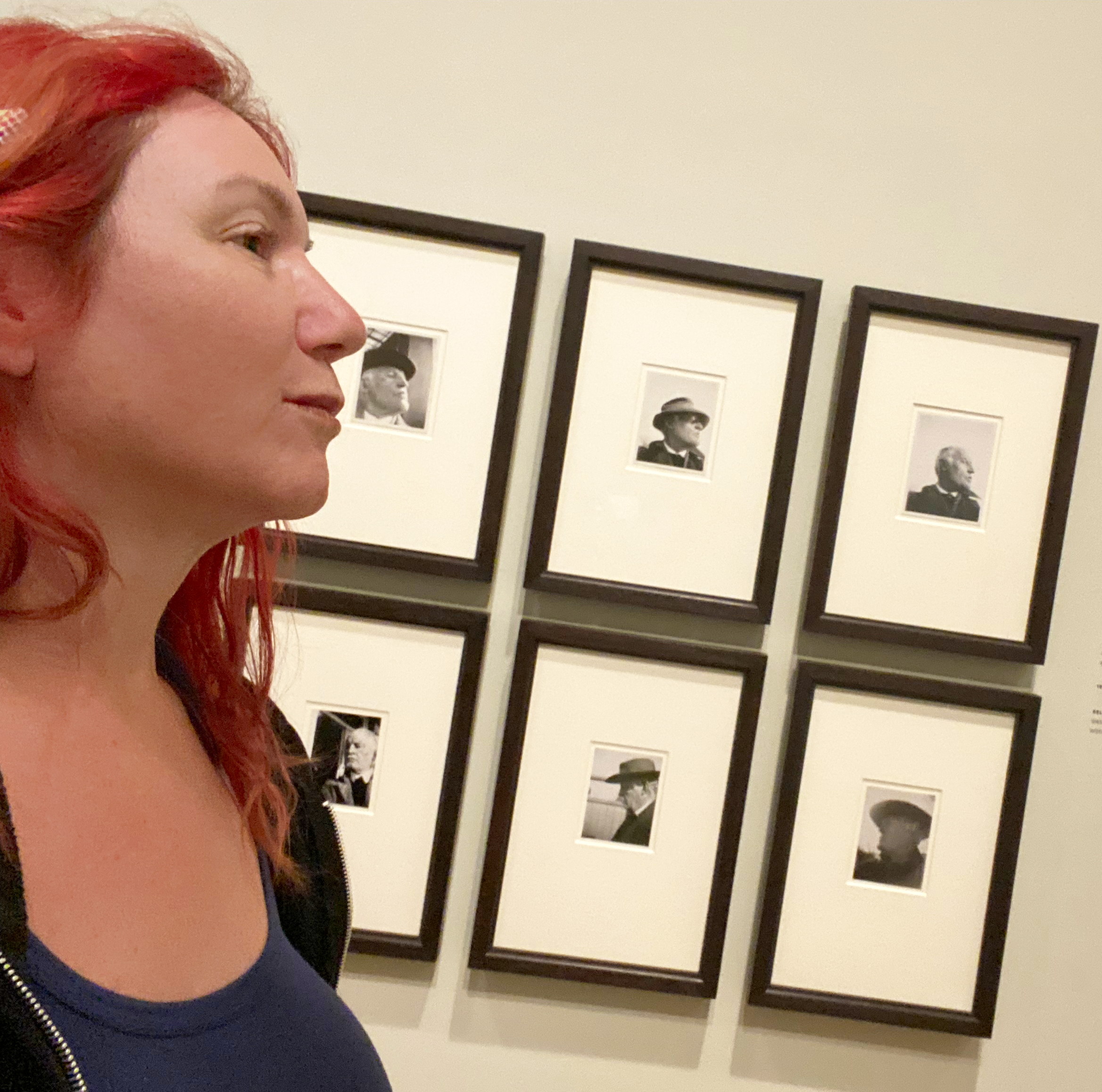Oslo, Norway was founded as a city at the end of the Viking Age in 1040 under the name Ánslo. After being destroyed by a fire in 1624, during the reign of King Christian IV, a new city was built closer to Akershus Fortress and named Christiania in honor of the king. In 1925, the city, after incorporating the village retaining its former name, was renamed Oslo. In 1948 Oslo merged with Aker, a municipality which surrounded the capital and which was 27 times larger, thus creating the modern, much larger Oslo municipality.
And that’s where we are heading!
A little backstory: when we first started making plans to visit Scandinavia, we thought it would be fun to take the train from city to city, enjoying the quiet moments as we watched the countryside drift past. So we booked passage on Scandinavian Rail. At least, we tried. The website would not accept our credit card. So we sent an email to them, asking for assistance. There was no reply. Thus, we had no choice but to use air travel. However, our location before coming to Oslo—Göteborg, Sweden—has rail service, so we decide to indulge ourselves just this once!
Göteborgs Centralstation är kommunikationsnavet för hela västra Sverige. Centralstationen, centralhuset och Nils Ericson-terminalen passeras dagligen av över 90 000 resenärer.
The train station is clean and convenient. What’s with this guy? Well, we spend about fifteen minutes walking around the station, and we notice him standing like this. Fifteen minutes later, he hasn’t moved. We had to look closely to see that it wasn’t a statue or performance art. So we take a photograph, and he does not notice. Whatever is on his phone must be really, really interesting!
There aren’t many people going from Göteborg to Oslo, so we have a table to ourselves. Mmmmm, yummy snacks.
The Swedish and then Norwegian countryside slides past in its summer beauty.
There is not much to do, so we find ways to entertain ourselves. 😆 And finally, we are here!
Oslo
We are staying at two different locations in Oslo: one is an Airbnb near the Akerselva and the other is in a hotel near city center.
As with other Airbnbs we’ve stayed at in Scandinavia, this one is lived in; that person is just out-of-town for a few days, so he is renting it out. Thus, we have no closet space, the refrigerator is full of not-our food—but we have a washer and dryer, so that makes up for it.
Our apartment is on the top floor, so we have a pretty good view of the surroundings.
Across the way we see what we think is a place to stay warm while outdoors on a cold winter’s day. Or a cold spring or autumn day, too. But we never see anyone in it. <shrug>
We are told that Norwegians stop work in the middle of the day during winter to enjoy a few hours of daylight. They enjoy the out-of-doors, but live in an unforgiving climate (most of the year). So, it makes sense that they would utilize rooftops efficiently.
Zooming in, we can see that they have plenty of space and furniture for social gatherings. However, except for the two people under the clear patio cover, we see no one enjoying the long days.
We have long sunset and sunrises here, so we take a lot of photographs of the sky.
Below us is Nedra Foss Park, situated next to the Akerselva. “Nedre Foss was in 2008 a left-over space, located in the dense urban context of Oslo. Surrounding this forgotten industrial space were some of Oslo’s most vital, creative and vibrant urban districts. Seeing the incredible potential of the space prompted the municipality to launch a competition to revitalize this hidden gem. Norconsult won the competition in 2008 with the concept “Flow”.”
Let’s go take a look.
Nedra Foss Park
“Originally, what is perhaps the country’s oldest mill was located here. Now a play landscape has been created for children of all ages, which is inspired by the history of the mill. In the newly constructed playscape, there are climbing opportunities and water play, and some of the installations, such as the mill wheel, help to tell the history of the area.
In the square in front of the play area, you will also find a tribune, which can be used during concerts or just to enjoy the sun, summer or winter. The space connects all the walkways in the park, including a newly laid walking path along the Akerselva River. In the past there has not been a hiking trail along the entire Nedre Foss, but now you will come closer to the river and the waterfall than ever before. North of the student silo, a boardwalk, or jetty, has been constructed near the river, where it increases in speed before the waterfall.”
We got lost for a while, then came upon this helpful sign to show us our exact location.
We didn’t know what to expect in Norway about many things. This park is very clean, so that’s nice, but they have to chain the bench to keep it from being moved or stolen, which is very America. Sad.
This is one of the longest days of the year, and the park has islands of people, similar to the pictures in university brochures.
This large building is Nedre Foss Gård, a restaurant: “Sophisticated seasonal fare served at a chic eatery in a restored 19th-century farm building.” However, since we have our own kitchen, we do not indulge.
Grünerløkka Studenthus er en ombygget silo. Du har kanskje sett det karakteristiske, runde bygget med glade farger som ligger midt på Grünerløkka? De runde formene går igjen i hele bygget – faktisk er flere av boligene trill runde med spesialdesignede møbler. Her bor du unikt og sentralt, og midt i hjertet i et av Oslos mest ettertraktede strøk.
Okay, but it’s still ugly.
At the base of the silo is a play area. The smooth surface on the right is rubbery, and the striped poles are wood. The hill is even softer. We don’t know what it is for, but perhaps it is a place to practice slalom skiing.
We pause to pose, and notice what looks like modern art in the concrete below. But, nope.
It’s a fish ladder, also known as a fishway, fish pass, fish steps, or fish cannon.
We take this photograph because of the dog’s ears, and because of how the dog’s hair matches the owners’ hair.
Notice their shoes. It’s very common in Sweden and Norway for women to wear practical shoes, no matter what the outfit. I suppose, when most of the year is icy, good shoes are a necessity.
Det krever ingen form for booking å ta turen innom House of Nerds – Her kan man kose seg noe godt i glasset sammen med likesinnede & inkluderende mennesker. Lokalet vårt er fylt opp med diverse konsoller, brettspill og morro som ikke koster noe ekstra å spile på. Vi har også et VIP Pc-Gaming rom for grupper opp til 20 personer, og et eget rom dedikert til å være et Virtual Reality Escape Room.
Waka waka waka waka waka waka waka waka waka waka waka.
Oslo Sights
There are wondrous sights to behold in Oslo. Let’s take a look!
The sign reads, “Sample Flow,” but…where is it coming from? Where is it going to? Just…Why?
When the Havnelageret was built in 1921, it was the largest concrete building in Europe and the largest building in the Nordic countries. After a total renovation in 1983 (carried out by the firm Arkitektene as), the “Jacob’s dream” re-emerged; a pink-colored office building filled by financiers, ship companies and oil companies.
Oslo Public Library (officially called Deichman bibliotek) is the municipal public library serving Oslo and is the country’s first and largest library.
You are probably thinking, “So, what?”
“Registered users may use the library every day, even when it is not staffed, from 7am to 11pm. It is also possible to borrow and return books when the library is not staffed.”
Yeah, try that in America and see what happens…
This visually oppressive structure has about 4,000 visitors daily. It even has a bust of Haakon Nyhuus!
Each year the Grand Hotel is the venue for the Nobel Peace Prize, hosts the annual Nobel Peace Prize banquet, and the prize winners stay in the Nobel suite at the hotel.
But you probably already knew that.
Sport Outlet er et spennende butikkonsept som jobber med merkevarer fra verdens ledende sport – og fritidsleverandører.
Yeah, so what?
Not only are they out of ponchos, but they posted a sign. You’re probably thinking, “No ponchos? Wow! What a shit hole!” Well, no. Norwegians are nice people. It’s probably to manage the disappointment of folks searching vainly for their precious ponchos, only to find empty poncho shelves.
There is no plaque explaining these statues. If you Google “Oslo naked statues”, there is a pretty long list. So, anyway…
Some guys were sitting around one day, thinking about stuff, and one of them said, “Let’s make a mini bottle gallery!” Taa daa, the Mini Bottle Gallery!
But wait, there’s more! You can have your annual stockholders meeting here, or your child’s birthday party!
But it’s not just a gallery, meeting place, and party room, it’s a restaurant and museum!
My wife thinks this is funny. Move along…
Just a reminder that, although Oslo is inland, it is on the Oslofjorden, an inlet stretching from an imaginary line between the Torbjørnskjær and Færder lighthouses and down to Langesund in the south to Oslo in the north. It is part of the Skagerrak strait, connecting the North Sea and the Kattegat sea area, which leads to the Baltic Sea.
In St. Olav’s Square is Lysfontene, a sculpture consisting of large steel plates that reflect colored light from spotlights in a light well below the sculpture itself. The light fountain rises seventeen meters above the ground and is the only one of its kind in Norway.
In the winter of 2012, it fell down. Civil architect Beret Aspaas of ACK Arkitekter was the architect for the renovation of St. Olav’s Square. She commented, “Fountains and lights create well-being. And when you first decide to have it in a place, we have to have an agency that gets to know how to use it properly. If this is not the case here, it is very reprehensible.”
“In addition to a varied and tempting selection of gifts and souvenirs in all price ranges, one gets to experience parts of Norwegian adventure and wildlife.” Sadly, the cost to ship the bear home was just too expensive.
Note: a postcard stamp in Norway costs over US $5.00. True.
Yes, it is a youth hotline where kids can talk to other young people about gender and identity, sexuality, and feelings.
Not only do Norwegians care about their kids, they care about their dogs, too.
From Coca-cola’s PR department: You hold the celestial power of the universe in your hand. Discover what it is like to drink Intergalactic, on Earth for a brief encounter. Infinite possibilities are yours when the ever-cool, indulgent flavour of space hits the RealMagic of our great Coca‑Cola taste.
Sadly, it just tastes like flavored cola.
Bris: the Jewish ceremony of circumcision. Now in bottle form!
Did you ever hear the expression, “A face only a mother could love”? This is how all men think of babies, so, I expect this is where men shop when invited to baby showers to ensure they will never be invited again.
Munchmuseet
The Munchmuseet is an art museum dedicated to the Norwegian artist Edvard Munch, located in the Bjørvika neighborhood of Oslo.
The museum has been described as a menacing black shadow and “I would say that the Munch Museum sucks, both in the sense that it doesn’t look good – but also in the sense that it sucks all the light out of Bjørvika”
Based on Caspar Friedrich‘s painting Das Eismeer, this sculpture by Monica Bonvicini, called She Lies, floats on a concrete platform in front of the museum. “The synthesis of structure/skin/ornament explore the interface between nature and culture, or that of a cultural artifact.”
Okay, so who was Edvard Munch?
Munch is most famous for his painting titled “Skrik“, or, in English, “The Scream”.
According to a sign at the museum, Munch was a natural born woodcut artist and mastered the art in record time. This implies that they kept records of artists starting the learn the craft, and a governing body to award “Master” level; however, no such documents are presented.
As a warning, there is quite a bit of exaggeration and unsupported claims surrounding these art pieces; as you might expect, I don’t share their enthusiasm.
I must confess, most of the paintings in the Munch museum have me thinking, “Was this drawn by a ten year old?” I mean, why is the dog wearing a superhero mask?
Angst is a woodcut where “faces show despair and the dark colors show a depressed state”. Note the obvious mastery.
This painting is titled Rød villvin (red wild wine) in Norwegian and Red Virginia creeper in English. Why is there a face in this picture? Why are the eye sockets green? Where is the left eyebrow?
I think this painting depicts a man running from a house fire he just started.
Munch created a number of works called Tête-à-tête, including this one. Even if you want to acknowledge that it might have degraded in the past 150 years, you’d still have to explain the splotch of grey on the person’s coat, and the dripping mustard stains.
Munch painted a group of six paintings all called “Det syke barn”, so we now must number them. Her head is on a pillow…or is that Mister Death in the background? Wooooooooooo, scary!
The painting was called “Love and Pain” by Munch. However, his friend, Stanislaw Przybyszewski saw the painting on exhibition and described it as “a man who has become submissive, and on his neck a biting vampire’s face.” So, naturally, the Munch museum has a plaque near the painting with the name “Vampyr”.
This work portrays a woman with a baby in her lap; the baby is dying. Ha ha, right. It’s really a space alien.
At some point, we have to call out the nonsense, right? This painting is called The Dance of Life. However, Munch painted them as corpses, or maybe zombies.
This painting is said to depict jealousy. Well, they must be jealous of someone’s personality or wealth, but certainly not their looks. Yikes!
Self-portrait, or Odo?
Titled “Angst”, this painted depicts green space aliens. And why is the one in front choking herself?
Let me just say that Edvard Munch and I have a very different idea of what naked means.
“What are we really looking at when we look at a painting? Something that resembles reality, or just colours and shapes arranged on a physical surface? Could it be both? From the start of his artistic career, Munch was interested in everything that lay on the surface of a painting, and he allowed the very process of painting to come to light. The brushstrokes themselves were part of telling the story. This meant that his paintings could also look like unfinished drafts. Munch would scrape and add to the painting many times. Sometimes, he squeezed thick paint directly from the tube, or thinned it out so that it ran down the picture. His pictures were no longer just recognizable motifs, but also told the story of the action behind them – the act of painting.”
Yeah, I’m calling “BS” on this one.
I left the title in this image in case you want to zoom in to read it. It says, “Title Under Consideration”.
“A self portrait is about seeing oneself. It is our own depiction of how we want to be perceived in a specific time or context. The self-portrait gives us the opportunity to say: This is how I am right now. For Munch, it wasn’t just about depicting himself as a person, but also as an artist. Sometimes, he places himself in a story we know from before, almost like a symbol. Other times, it is as though he puts on a mask. Perhaps to meet someone’s expectations? Loneliness, death and erotic desire also appear in these pictures. During the final years of Munch’s life, the figure in his self-portraits becomes increasingly naked. The mask drops and the old man steps forward, exposed and free of vanity.”
Ha ha. “Here are eight pictures of me, because I am free of vanity!”
Almost too easy…
This work is titled Ashes. Take a long look and think about what Munch might have been trying to describe. Then, read the probably psychedelic-drug-infused description at edvardmunch.org.
Sorry, guys, this just isn’t that difficult to draw.
According to this fellow, “The man in the woodcut bears Munch’s features…” But I didn’t have to tell you that, right? I mean, the resemblance is uncanny.
A work by Picasso title “Seated Woman” is included at the Munch Museum. However…it looks like two people, she is holding a fish, and I don’t think she’s sitting.
Munch’s work titled Cabaret is but another example of the exceedingly rigorous effort he put into capturing even the smallest detail of the moment.
Just what the hell is happening here is anyone’s guess.
This masterpiece is titled “Man’s Head Beneath Woman’s Breast”. I’m not making this up; Google it.
So, let us end with what is written on a plaque about Drift. Please feel free to stick it into Google Translate.
Drift
Det aller viktigste [er] seksualdesperasionen-onanikompleksene = det usensurerte drommeliv.
– Rolf Stenersen
Rolf Stenersen tilhorte et kulturradikalt mile i mellomkrigs-tiden som ville bekjempe samfunnets undertrykkende konvensjoner gjennom kunst og litteratur. I sitt eget forfatterskap var han sarlig opptatt av à avskaffe dobbelt- moral, tabuer og skyldfolelse knyttet til kjonnslivet.
Vedtatte konvensjoner ble utfordret i bade form og innhold.
Novellene i Stenersens debutbok Godnatt da du fra 1931 tar opp kontroversielle temaer som prostitusjon, homofili og kvinnelig seksualitet, i en eksperimentell form som hen-spiller pà drommer og fantasier. Boken regnes som et tidlig eksempel pà surrealistisk litteratur i Norge.
Flere av bildene Stenersen samlet pà kretser pà lignende vis omkring erotikk, begjaer og forbudt nytelse. Noen verk forestiller erotiserte og mytologiske figurer, mens andre konfronterer ydmykelse og skam knyttet til driftslivet.


